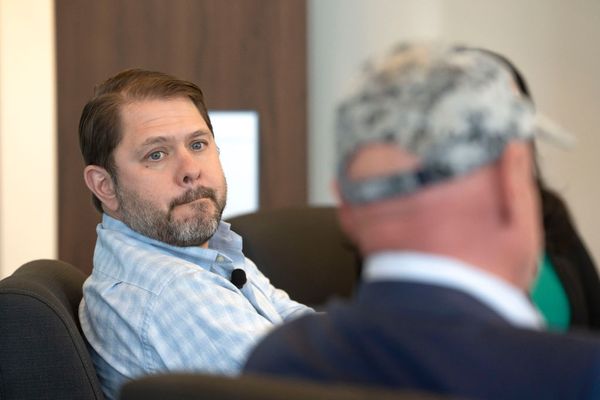Advanced biology has raced ahead—single-cell maps, spatial assays, AI-enabled diagnostics—while the public conversation often lags behind. If we want societies to make wise choices about how these tools shape health, food, and the environment, then the language, venues, and guardrails of discussion have to evolve alongside the science. That means translating complexity without flattening it, opening black boxes without overwhelming people, and building feedback loops so communities influence research priorities rather than merely reacting to them.

Why Biology Needs a New Public Language
Modern biology no longer deals only in averages; it reads variation as signal. In cancer, autoimmune disease, or brain disorders, what matters is often the behavior of a few outlier cells and the neighborhoods they inhabit. That shift pulls concepts like cell states, microenvironments, and lineage into everyday explanations. Public-facing communicators can ground these ideas in concrete stories—how a therapy targets a pathway active in only some cells, or why two patients with the same diagnosis respond differently—while pointing to the lab steps that make such precision possible, from careful sample handling to high-quality barcoding and single cell genomics. The goal isn’t to turn everyone into a bench scientist; it’s to give people a sturdy mental model so that policy debates and personal decisions rest on the right scaffolding.
Turning Complexity into Stories Without Losing the Science
The risk in simplifying is distortion; the risk in preserving all the nuance is paralysis. A better pattern is progressive disclosure: start with the clear headline (what the tool does and why it matters), add the core trade-offs (accuracy, cost, speed, equity), and then reveal the methods for those who want to go deeper. When covering AI in diagnostics, for example, a newsroom might lead with the clinical use case and results, then explain how algorithms are validated, updated, and monitored. Importantly, this is not just a media craft issue; it’s also a governance one. Health authorities increasingly publish living resources that the public and press can cite, such as the U.S. Food and Drug Administration’s list of AI/ML-enabled medical devices that are authorized for use—useful for separating marketing claims from cleared indications and for understanding how oversight actually works.
A similar approach helps with gene editing, where stakes and emotions run high. Public engagement is most constructive when it is early, iterative, and linked to decisions that matter. The U.S. National Academies have emphasized this in their work on genome editing and on managing contentious science communication: engagement should be designed to improve decision quality, not merely to “educate” an audience after choices are already made. That framing keeps discussions practical and accountable.
Openness and Oversight: The Trust Infrastructure
Trust is not a vibe; it’s infrastructure. Openness lets people inspect claims, and oversight ensures there is somewhere to go when things fail. At the global level, the World Health Organization has issued guidance for the ethical governance of large multi-modal models in health—a recognition that generative AI will touch not only clinical decisions but also research and public-health communications. The guidance calls for transparency, rigorous evaluation, and monitoring across a model’s lifecycle so benefits are realized without amplifying bias or misinformation. Citing and linking to such primary guidance in public explanations anchors debate in documented standards rather than hearsay.
Openness also means the underlying research is findable, accessible, and reusable. In 2021, UNESCO member states adopted the first international standard for open science, setting shared principles and actions to expand access to data, methods, and literature. When communicators reference this framework, they implicitly advocate for a discourse where evidence is inspectable by journalists, policymakers, patient advocates, and citizen scientists alike—and where communities can contribute data and questions back to the system.
Bringing Citizens Into the Loop
Integration into public discourse isn’t only about better explainers; it’s about designing participation. Community advisory boards in rare-disease research, citizen-science sampling for environmental genomics, and open annotation of public datasets are all ways to shift from broadcast to collaboration. Local contexts matter: a farming cooperative weighing gene-edited crops will ask different questions than a patient group considering single-cell tumor profiling. Meeting people where they are—libraries, town halls, faith centers, clinics—helps surface lived knowledge that formal studies miss. It also clarifies boundaries: what’s already regulated, what’s under active review, and what remains genuinely uncertain.
The communication tools themselves should model the standards we want from the science. Visuals can show how a biopsy is transformed into a cellular map, or how a diagnostic algorithm is tested across diverse populations. Plain-language summaries can accompany preprints and papers, with clear statements of limitations and conflict-of-interest disclosures. When journalists cover new findings, linking to primary resources—WHO governance guidance for AI, the FDA’s device listings, UNESCO’s open-science framework—turns each story into a portal, not a cul-de-sac.
A Culture Shift That Makes Better Decisions Possible
Advanced biology will only be as beneficial as the conversations we have about it. If institutions treat the public as partners, not spectators, then debates about surveillance genomics, embryo editing, or AI triage can move beyond fear or hype toward concrete, revisable rules. If scientists and communicators prize clarity and humility—explaining not just what we know, but how we know it and where the edges are—then disagreements can be productive rather than polarizing. And if openness and oversight remain non-negotiable, then trust can be earned, not demanded. In that kind of discourse, technologies like single cell genomics are not just technical milestones; they’re shared projects—understood, scrutinized, and steered by the people they are meant to serve.







